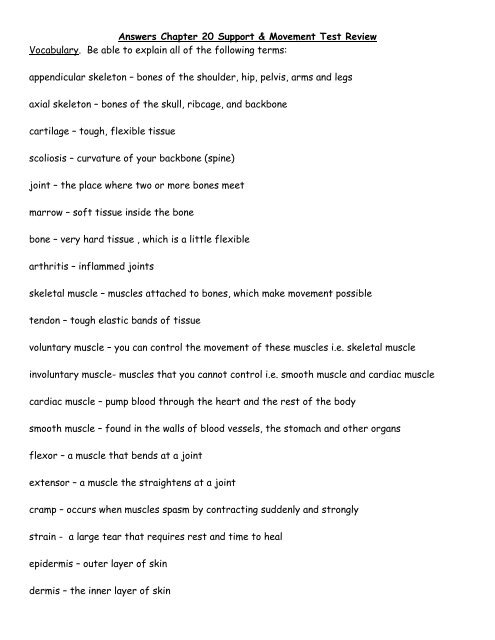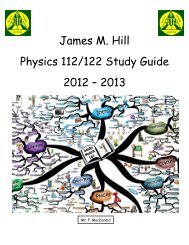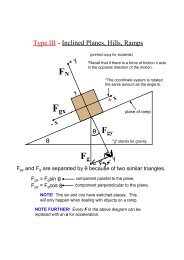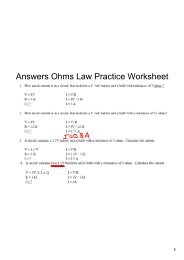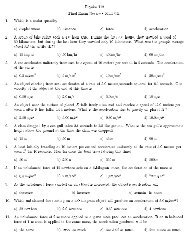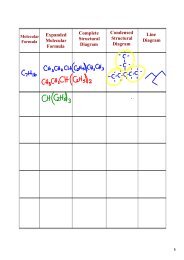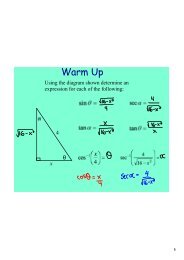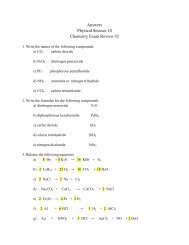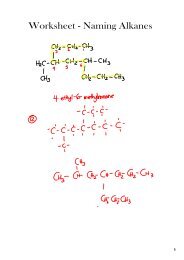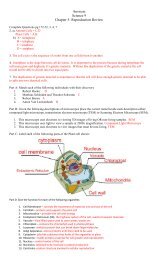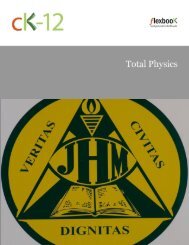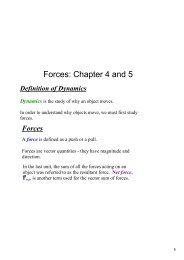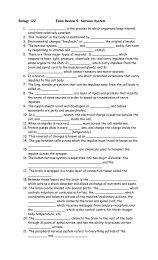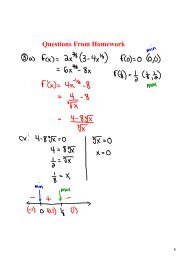Chapter 20 Support & Movement Test Review
Chapter 20 Support & Movement Test Review
Chapter 20 Support & Movement Test Review
- No tags were found...
You also want an ePaper? Increase the reach of your titles
YUMPU automatically turns print PDFs into web optimized ePapers that Google loves.
Answers <strong>Chapter</strong> <strong>20</strong> <strong>Support</strong> & <strong>Movement</strong> <strong>Test</strong> <strong>Review</strong>Vocabulary. Be able to explain all of the following terms:appendicular skeleton – bones of the shoulder, hip, pelvis, arms and legsaxial skeleton – bones of the skull, ribcage, and backbonecartilage – tough, flexible tissuescoliosis – curvature of your backbone (spine)joint – the place where two or more bones meetmarrow – soft tissue inside the bonebone – very hard tissue , which is a little flexiblearthritis – inflammed jointsskeletal muscle – muscles attached to bones, which make movement possibletendon – tough elastic bands of tissuevoluntary muscle – you can control the movement of these muscles i.e. skeletal muscleinvoluntary muscle- muscles that you cannot control i.e. smooth muscle and cardiac musclecardiac muscle – pump blood through the heart and the rest of the bodysmooth muscle – found in the walls of blood vessels, the stomach and other organsflexor – a muscle that bends at a jointextensor – a muscle the straightens at a jointcramp – occurs when muscles spasm by contracting suddenly and stronglystrain - a large tear that requires rest and time to healepidermis – outer layer of skindermis – the inner layer of skin
hair follicle – each hair that grows out of your body comes from a hair follicle, found in thedermis layer of your skinoil glands – found near hair follicles they secrete a substance that helps soften the skin andkeeps it waterproofsweat glands – used for excretionpg 358 Vocabulary <strong>Review</strong> Matching #1, 3, 4,6,7,81. axial skeleton4. extensor3. joint6. bones7. voluntary8. hair folliclepg 358 Applying Defintions #1, 2, 4,5,6,81. epidermis is the outer layer of skin, the dermis is the inner layer2. flexor bends at the joint when muscles move, extensors straighten at the joint when musclesmove.4. bone is very hard tissue, which is only slightly flexible. Cartilage is a touch tissue which isflexible5. skeletal muscle is attached to the bones in your body and only moves when the bones movetherefore it is voluntary. Involuntary muscles include the smooth muscle and cardiac musclesthey do not need to be told by your body to move.6. axial skeleton makes up the skull, rib cage and backbone whereas the appendicular skeleton ismade up of bones of the shoulder, hip, pelvis, arms and legs.8. smooth muscle is found in the stomach, the intestines and blood vessels whereas cardiacmuscle is found only in the heart.Content <strong>Review</strong>. Write T if the statement is true. If it is false, change the underlined wordsto make it true:1. The skull protects the brain. T2. The bones of the arms and legs are part of the axial skeleton. F3. Cartilage is the tough, but flexible material in the ears. T4. Skeletal muscles can only push bones. F5. Your skin is made up of three layers. F6. Inflamed joints are the main symptom of muscular dystrophy. F7. The dermis layer contains many dead skin cells. F8. Involuntary muscles are muscles that cannot be controlled. T9. Blood cells are made in the tendons of bones. F
10. Cardiac muscle is found only in the lungs. F<strong>Review</strong> Questions:1. What are five functions of the skeleton?<strong>Support</strong>s the body and gives it shapeCovers and protects certain body organsWork with muscles to make movement possibleSome bones Make blood cellsBones store minerals such as calcium and phosphorous that the body needs2. Describe what happens to the skeleton of a baby during development and after birth?As a baby the skeleton is made mostly of cartilage and very little bone, as you grow and developthe cartilage gets replaced by bone.3. Describe three problems of the skeletal system.Fractures – breaking a bone which can be partial or completeArthritis – inflamed joints which causes pain and limited movement. The cartilage betweenbones is destroyed and replaced with bone deposits.Scoliosis – usual curve in your backbone.4. Explain how muscles work, using the bicep and tricep as an example.The biceps in the front of the arm bend your arm at the elbow. When the arm is bent thebiceps contract or are flexed. The triceps are at the back of your arm. The job of the tricepis to straighten the arm or extend.5. What is the purpose of the epidermis?The purpose of the epidermis is to support and protect the body.Concept <strong>Review</strong>Pg 359 Concept review: Understanding a Diagram #1, 2, 4, 51. clavicle 2. radius and ulna 4. Femur 5. tibia and fibulaLabel the following diagram:1. skull 2. jaw bone (mandible) 3. collarbone (clavicle) 4. shoulder blade5. breast bone (sternum) 6. rib cage 7. Humerous 8. spine9. ulna 10. Radius 11. illium (pelvis) 12. femur13. tibia 14. fibula


